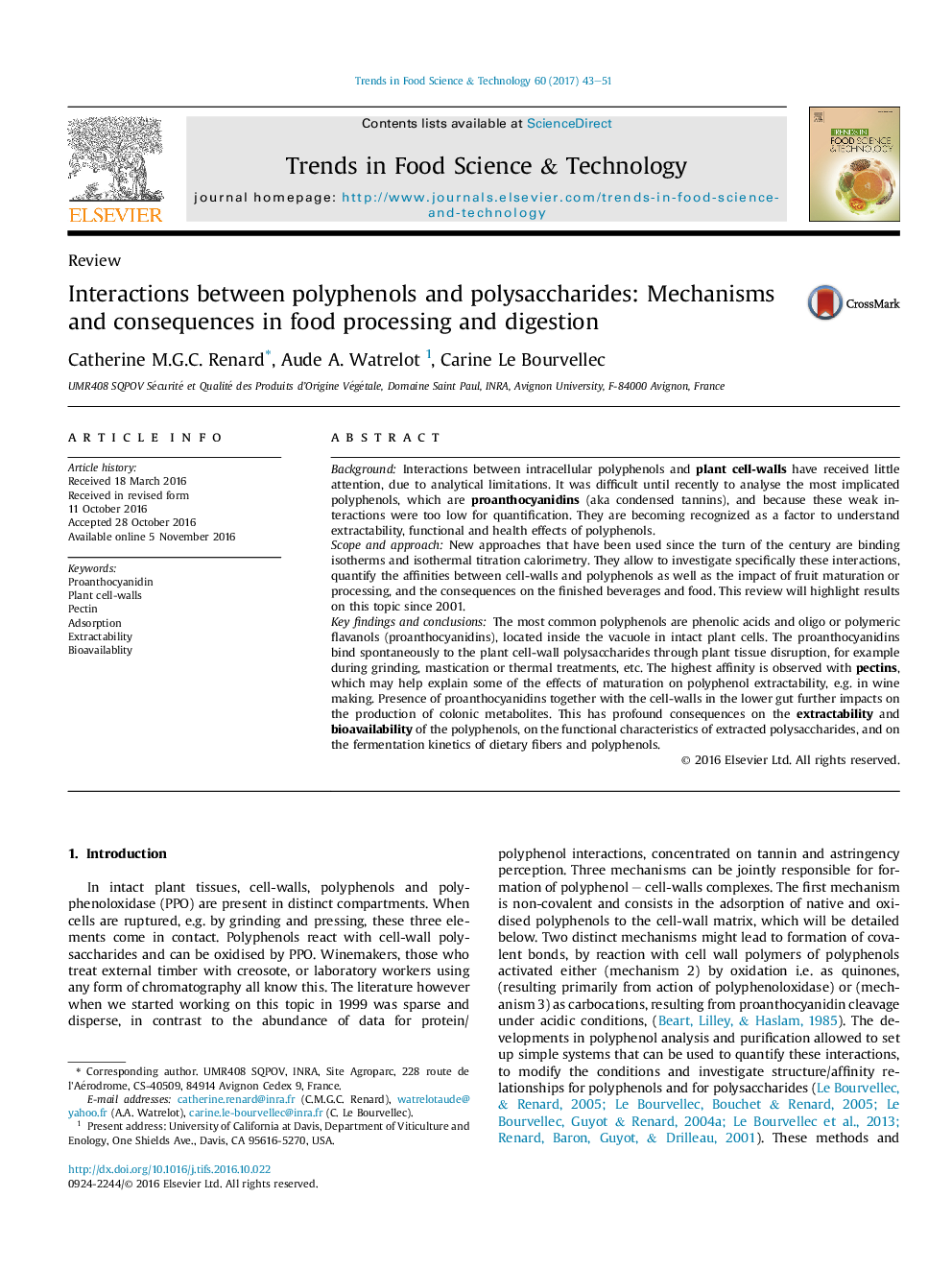| کد مقاله | کد نشریه | سال انتشار | مقاله انگلیسی | نسخه تمام متن |
|---|---|---|---|---|
| 5523792 | 1546119 | 2017 | 9 صفحه PDF | دانلود رایگان |
- Proanthocyanidin/cell-walls interactions have attracted renewed interest since 2000.
- New knowledge concerns mostly consequences in beverage production and mechanisms.
- Proanthocyanidins bind spontaneously and rapidly to plant cell-walls.
- Low affinities are measured by isothermal titration calorimetry (circa 10â3Â M).
- Binding of proanthocyanidins impacts their extractability to must.
BackgroundInteractions between intracellular polyphenols and plant cell-walls have received little attention, due to analytical limitations. It was difficult until recently to analyse the most implicated polyphenols, which are proanthocyanidins (aka condensed tannins), and because these weak interactions were too low for quantification. They are becoming recognized as a factor to understand extractability, functional and health effects of polyphenols.Scope and approachNew approaches that have been used since the turn of the century are binding isotherms and isothermal titration calorimetry. They allow to investigate specifically these interactions, quantify the affinities between cell-walls and polyphenols as well as the impact of fruit maturation or processing, and the consequences on the finished beverages and food. This review will highlight results on this topic since 2001.Key findings and conclusionsThe most common polyphenols are phenolic acids and oligo or polymeric flavanols (proanthocyanidins), located inside the vacuole in intact plant cells. The proanthocyanidins bind spontaneously to the plant cell-wall polysaccharides through plant tissue disruption, for example during grinding, mastication or thermal treatments, etc. The highest affinity is observed with pectins, which may help explain some of the effects of maturation on polyphenol extractability, e.g. in wine making. Presence of proanthocyanidins together with the cell-walls in the lower gut further impacts on the production of colonic metabolites. This has profound consequences on the extractability and bioavailability of the polyphenols, on the functional characteristics of extracted polysaccharides, and on the fermentation kinetics of dietary fibers and polyphenols.
Journal: Trends in Food Science & Technology - Volume 60, February 2017, Pages 43-51
